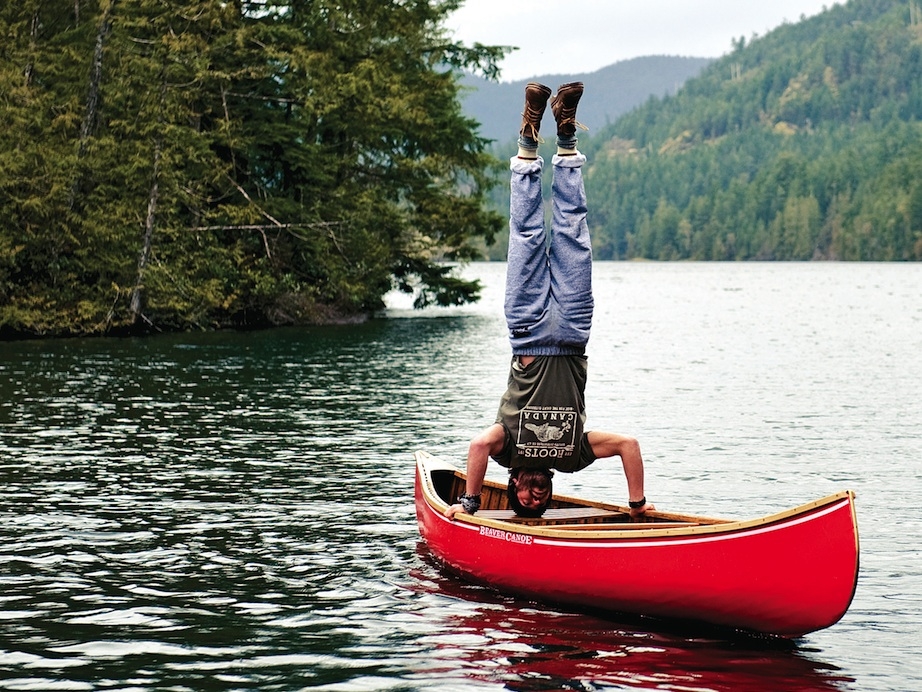This article originally appeared in Canoeroots and Family Camping magazine.
Since the passing in March, 2011 of canoe guru Captain Kirk Wipper, I’ve been thinking about one of the first amazing things I ever saw him do in a canoe—a headstand on the center thwart of a 16-foot, wood-canvas Peterborough Canadian.
Back when most rivers flowed the other way because the ice age had yet to come, proficiency in a canoe included a variety of novelty moves that any novice hungered to learn from the masters. Take Omer Stringer, a contemporary of Wipper’s, and his mesmerizing effect on young paddlers. Stringer mastered all the functional canoeing and portaging skills as a guide and general factotum in Algonquin Park. But in the 1960s he crisscrossed the province demonstrating canoe stunts—a kind of canoeing that is all but gone today, lost in the rush of getting certified and carded up.
I vividly remember Omer standing on the dock at Camp Kandalore, describing head- stands and shakeouts and all the cool stuff you could do in a canoe. As he was talking, his canoe, which floated behind him untethered, drifted gently away from the dock. Kids in the audience got agitated, pointing and calling out to Omer: “your canoe is floating away!”
Totally unconcerned, he kept talking. Then, with the power of a gymnast and the timing of a circus showman, he did a standing broad jump from the dock into the moving canoe, clearing a couple yards or more without missing a beat in his discourse. Howls of approval pealed out from the audience.
There were other tricks as well. Canoe over canoe is a rescue technique, of course. But the term also referred to a stunt per- formed regularly during free canoeing at camps throughout the ‘40s, ‘50s and ‘60s.
The stuntman or woman sat behind the stern seat and paddled like crazy toward a willing participant in another canoe. Lining up for a T-bone collision, the stunt involved ramping the moving canoe as far as possible over the mid-ships of the stationary canoe. Next, in one fluid motion, the paddler stood and ran up the moving boat until it balanced over the stationary canoe, and then see- sawed down on the other side. At this point, the paddler settled in and continued on his or her merry way. Canoe over canoe.
The spectacular headstand was some- thing that many Kandalore campers felt compelled to learn if ever they were to paddle like a master. Training for the headstand included the monkey walk—turning 360 degrees in a canoe with hands and feet on the gunwales—and progressed to the flip— spinning the canoe on its longitudinal axis, above the water, without sinking it.
Adding a second person opened doors to gunwale bobbing, jousting and the double headstand.
Since Kirk and Omer were doing their stunts, and encouraging others to do the same, canoeing has evolved. The glamor of these tricks has faded, lost to historic irrelevance. Maybe today’s leaders should sit down and delineate a curriculum for Flat- water Stunting levels I, II and III certification. A flashy badge could be awarded to those who achieve Master Stuntman status.
Why would you want to do a headstand in a canoe on flatwater? It’s a bit like practicing Zen. A path to enlightenment known only to the great canoe masters of old and those willing to wade in and give it a whirl.
James Raffan mastered the monkey walk in graduate school and is still working on his headstand.
This article appeared in Canoeroots & Family Camping, Late Summer 2011.




